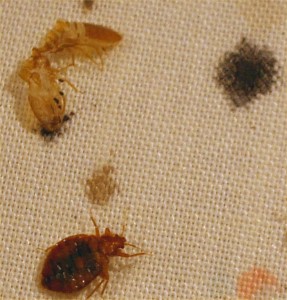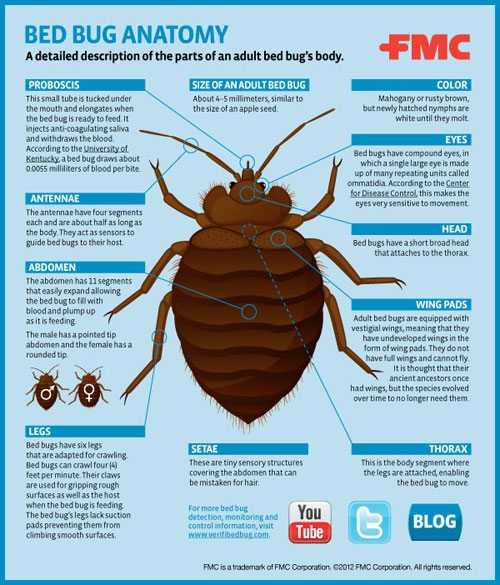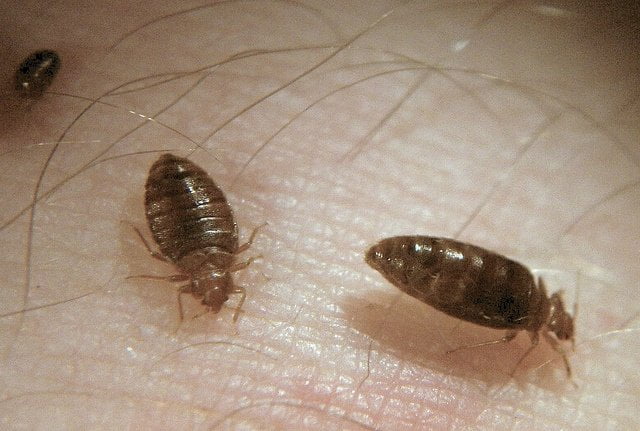Bed bugs can enter a house through luggage, clothing, furniture, and used mattresses. They can also come in through cracks and crevices in walls and floors.
Bed bugs are small, reddish-brown insects that feed on the blood of animals or humans while they sleep. While they don’t transmit diseases, their bites can cause itching and discomfort. We will explore the common ways bed bugs enter a house, how to identify an infestation, and effective methods for getting rid of them.
By understanding how bed bugs enter a house, you can take proactive measures to prevent an infestation and maintain a pest-free living space. Let’s delve into the details of how these pesky bugs can infiltrate your home and what you can do about it.

Credit: www.health.ny.gov
Common Entry Points
One of the primary concerns for homeowners is understanding how bed bugs enter a house. Identifying common entry points can help in preventing infestations to maintain a pest-free environment.
Infested Furniture And Clothing
Infested furniture and clothing are notorious carriers of bed bugs. When purchasing second-hand furniture from thrift stores or garage sales, it’s essential to inspect the items meticulously. Clothing can also harbor bed bugs, especially when picking up used items from flea markets or online marketplaces. These items should undergo thorough inspection and potential treatment before bringing them inside the house.
Used And Rental Items
Used and rental items such as mattresses, bed frames, and upholstered furniture can also serve as a gateway for bed bugs to infiltrate a home. Before purchasing or renting these items, it’s imperative to check for any signs of infestation. Additionally, using caution when traveling and staying in hotels is vital as bed bugs can hitch a ride on luggage and clothing, gaining access to the home upon return.
Unintentional Transportation
Unintentional Transportation is one of the common ways that bed bugs enter a house. These pesky insects are adept at hitching a ride on various items, ultimately making their way into homes without the residents even realizing it.
Travel Experiences
Travel experiences can unknowingly introduce bed bugs to a home. Staying in infested hotels or using public transportation where bed bugs may be hiding in seats or luggage compartments can result in bringing these unwelcome pests back home.
Visitors And Guests
Visitors and guests could unintentionally introduce bed bugs into a house upon visiting. Bed bugs may hitch a ride on their belongings, such as luggage or clothing, and infest the home unaware to the visitor and homeowner.
Hitchhiking Through Connections
Neighboring Units Or Homes
Bed bugs are masters of hitchhiking and can easily infest a house through their connections to neighboring units or homes. These relentless pests have an uncanny ability to crawl through tiny cracks and crevices, making their way from one place to another. If your neighbors have a bed bug infestation, there’s a high chance these unwelcome critters can find their way into your living space as well.
Bed bugs can enter your house through shared walls, electrical outlets, or even pipes that connect each unit. They are excellent climbers and can traverse easily between floors, ceilings, and even through adjoining buildings. Their flat bodies make it easy for them to squeeze through even the tiniest of gaps, giving them access to invade your home undetected.
Shared Laundry Facilities
Another common way bed bugs can enter your house is through shared laundry facilities. Whether you use a communal laundry room or bring your laundry to a laundromat, these pests can easily hitch a ride on your clothing or belongings. When infested laundry mixes with others, it creates prime opportunities for bed bugs to spread from one person’s clothes to another’s.
To prevent bringing bed bugs home from shared laundry facilities, it’s crucial to take some precautionary measures. Firstly, consider using plastic bags to transport your clean and dirty laundry. Seal your items tightly in these bags to minimize any chances of bed bugs finding a way into your belongings.
- Inspect the washing machines and dryers before using them. Look out for any signs of bed bugs, such as dark stains or shedded exoskeletons. If you notice anything suspicious, it’s best to opt for a different machine or facility.
- Always use the hottest water setting available for washing your clothes. Bed bugs cannot withstand high temperatures and are likely to be killed off during the washing process.
- Similarly, drying your clothes at the highest heat setting for at least 30 minutes can effectively eliminate any bed bugs that may have hitched a ride.
- Avoid leaving your clean laundry unattended in communal areas. Bring your items back to your living space as soon as possible to minimize the risk of encountering bed bugs.
By taking these precautions and staying vigilant, you can reduce the chances of bed bugs entering your house through shared laundry facilities.

Credit: www.planetnatural.com
Invasive Behavior
Bed bugs are highly invasive pests that can enter a house through various means. Understanding their invasive behavior can help you take proactive measures to prevent infestations. Here are two key aspects of their invasive behavior:
Nocturnal Movement Patterns
Bed bugs are primarily nocturnal creatures, meaning they are most active at night. They have a remarkable ability to detect the carbon dioxide emitted by humans when they exhale, which helps them locate potential hosts. While you peacefully sleep, these miniature intruders come out of their hiding places, venture towards your bed, and indulge in their favorite meal – your blood. Their nocturnal habits make it easier for them to go undetected for long periods.
Ability To Hide In Small Cracks
One of the reasons why bed bugs are such challenging pests to eliminate is their exceptional ability to hide in small cracks and crevices. These pests can squeeze into tiny spaces as thin as a credit card, allowing them to infest mattresses, bed frames, headboards, and even electrical outlets. Bed bugs commonly hide in mattress seams, behind loose wallpaper, under carpet edges, and along the edges of furniture. Their elusive nature combined with small hiding spots makes it difficult to spot them until the infestation has spread.
Prevention Measures
Prevention Measures:
Careful Inspection Of Second-hand Items
When purchasing second-hand furniture, thoroughly examine all nooks and crannies for any signs of bed bugs.
Use a flashlight to look for live bugs or their shed skins, eggs, or fecal stains, especially in seams and crevices.
Avoid bringing used items into your home without ensuring they are bed bug-free to prevent infestations.
Use Of Bed Bug-proof Encasements
By enclosing mattresses, box springs, and pillows in bed bug-proof encasements, you can prevent these pests from entering or escaping.
Ensure the encasements are labeled specifically for bed bugs and have no tears or openings where bugs can enter or escape.
Regularly inspect the encasements and replace them if damaged to maintain effective prevention.
Maintaining a clean and clutter-free home can also help in preventing bed bug infestations by reducing hiding spots.

Credit: responsiblepestcontrol.net
Professional Intervention
Professional intervention is essential when dealing with a bed bug infestation. Seeking the expertise of pest control professionals and exterminators can help effectively eliminate these pesky pests from your home.
Seeking Assistance From Pest Control Services
When bed bugs invade your space, it’s crucial to consult reputable pest control services. Professional exterminators have the knowledge and experience to address the infestation with the most effective treatments. They can inspect your home thoroughly to pinpoint the areas infested with bed bugs and develop a targeted plan to eradicate them.
Consulting With Exterminators
Engaging with exterminators is a crucial step in combating bed bugs. These professionals have access to advanced methods and tools that can effectively eradicate bed bugs. Through a comprehensive assessment, exterminators can determine the extent of the infestation and recommend a tailored approach to eliminate bed bugs from your home.
Frequently Asked Questions On How Do Bed Bugs Enter A House?
How Do Bed Bugs Enter A House?
Bed bugs can enter a house through various ways such as luggage, furniture, clothing, and even through cracks and crevices in walls. They latch onto anything that provides them access to a warm environment and a source of food, which is human blood.
Regular inspection and preventive measures can help in reducing the risk of infestation.
Can Bed Bugs Fly?
No, bed bugs do not have wings and therefore cannot fly. They are small, oval-shaped insects that move by crawling and cannot jump either. However, they can crawl quickly over floors, walls, and ceilings to reach their desired location.
How Can I Prevent Bed Bugs From Entering My Home?
To prevent bed bugs from entering your home, take measures like regularly inspecting furniture and bedding for signs of infestation, using protective covers for mattresses and box springs, and avoiding bringing second-hand furniture or used mattresses into your house. Additionally, keeping a clean and clutter-free environment can help minimize hiding places for bed bugs.
Conclusion
To prevent bed bugs from entering your home, be vigilant. Regularly inspect your belongings and surroundings. Seal cracks and crevices. Wash and dry bedding often. Remember, early detection is key to effectively combating bed bug infestations. Stay proactive and safeguard your home from these unwelcome pests.
Related posts:

I’m MD Tanvir, and I bring years of expertise gained from working closely with pest control companies to the forefront. My journey in the industry has inspired me to launch Bug Battler, a platform aimed at equipping people with the know-how to combat pests autonomously. Through Bug Battler, I aim to empower individuals with practical insights to tackle pest infestations effectively.

